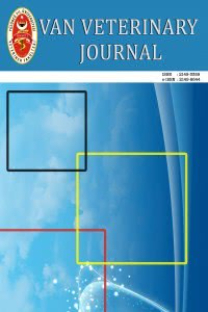Physical, chemical, microbiological and sensory characteristics of some fruit-flovored yoghurt
duyusal değerlendirme, yoğurt, fiziksel özellikler, mikrobiyolojik kalite, kimyasal özellikler, gıda katkı maddeleri
Bazı meyve aromalı yoğurtların fiziksel, kimyasal, mikrobiyolojik ve duyusal özellikleri
sensory evaluation, yoghurt, physical properties, microbiological quality, chemical properties, food additives,
___
- 1.Kurt A (1981): Süt Teknolojisi. Atatürk Üniversitesi Yayınları, No: 573. Atatürk Üniversitesi Basım Evi.
- 2. Akın N, Rice P, (1994): Main yogurt and related products in Turkey. Cult. Dairy Prod. J. 29:23-29.
- 3.White C H (1995): Manufacture of high quality yogurt. Cult. Dairy Prod. J. 30 :18-24.
- 4.Hewitt D, Bancroft H J (1985): Nutritional value of yogurt. J. Dairy Res. 52:197-207.
- 5.Tamime AY, Robinson R K (1985): Yogurt Science and Technology. Pergamon Press Ltd., Oxford.
- 6.Çakmakci S, Çağlar A, Türkoğlu H (1993): Importance of yogurt in human nutrition. Standard 32:29-38.
- 7.Blanc B (1986): The nutritional value of yogurt. Int. J. Immunotherapy. Suppl. 11:25-32.
- 8.Gilliland S E (1991): Properties of yogurt. In "Therapeutic Properties of Fermented Milks". R.K. Robinson (Ed), p 65 Elsevier Applied Science, London.
- 9.Yaygın H, Kılıç M (1980): A study on properties, of yogurt produced using starter culture and carryover culture techniques. 7th. Scientific Congress, Agriculture and Research Group, 6-10 October, Adana,Turkey.
- 10.Dayisoylu K S (1993): A Study of the physical, chemical, microbiological and flavor characteristics of yogurt commercially produced and sold in Van, Turkey. Master Thesis. Yuzuncu Yil University, Food Science and Technology Department, Van, Turkey.
- 11.Çon A H, Çakmakçı S, Çağlar A, Gökalp H Y (1996): Effects of different fruits and storage periods on microbiological qualities of fruit-flavored yogurt produced in Turkey. J. Food Prot. 59 :402-406.
- 12.McGregor J U, White C H (1986): Effect of sweeteners on the quality and acceptability of yogurt. J. Dairy Sci. 69:698-703.
- 13. AOAC (1990): "Official Methods of Analysis". 15 th ed. AOAC, Arlington,VA.
- 14. Kurt A, Çakmakçı S, Çağlar A (1996): Standard methods for analysis of milk and milk products. Atatürk University Publication Center. Publication number 252/d.
- 15.Marth E H (1978): "Standard Methods for the Examination of Dairy Products". 14th ed. American Public Health Association, Washington, D.C.
- 16.Farooq H, Haque Z U (1992): Effect of sugar esters on the textural properties of nonfat low calorie yogurt. J. Dairy Sci. 75:2676-2680.
- 17.Speck M L (1976): "Compendium of Methods for the Microbiological Examination of Foods". American Public Health Association, Washington, D.C.
- 18. Tekinşen O C, Keleş A (1994): Besinlerin Duyusal Muayenesi. Selçuk Üniv. Veteriner Fak. Yayın Ünitesi, Konya.77 sayfa.
- 19. SAS Inst. (1995): SAS User's Guide: Statistics, Version 6.0 Edition. SAS., Inc., Cary, NC.
- 20.Steel R D G, Torrie J H (1980): "Principles and Procedures of Statistics- A biometrical Approach". 2nd ed. McGraw-Hill, New York.
- 21.O'Neil J M, Kleyn D H, Hare L B (1979): Consistency and compositional characteristics of commercial yogurts. J. Dairy Sci. 62:1032-1036.
- 22.Laye I, Karleskind D, Morr C V (1993): Chemical microbiological and sensory properties of plain nonfat yogurt. Food. Sci. 58 :991-1000.
- 23.Keating K R, White C H (1990): Effect of alternative sweeteners in plain and fruit-flavored yogurts. J. Dairy Sci.73:54-62.
- 24.Anonymous (1989): Yogurt standard. (TS 1330). Turkish Standards Institute. Necatibey Cad. 112. Bakanlıklar, Ankara, Turkey.
- 25.Arnott D R, Duitschaever C L, Bullock D (1974): Microbiological evaluation of yogurt produced commercially in Ontario. J. Milk Food Technol. 37:11-13.
- 26.Salji J P, Saadi S R, Mashhadi A (1987): Shelf life of plain liquid yogurt manufactured in Saudi Arabia. J. Food Prot. 50 : 123-126.
- ISSN: 1017-8422
- Yayın Aralığı: 3
- Başlangıç: 1990
- Yayıncı: Yüzüncü Yıl Üniv. Veteriner Fak.
Farklı hayvan türlerine ait çiğ etlerin SDS-PAGE yöntemiyle belirlenmesi üzerin bir araştırma
Polyakrilamid jel özoelektrik fokuslama tekniğinin (PAGIF) et türlerinin ayırımında kullanılması
Physical, chemical, microbiological and sensory characteristics of some fruit-flovored yoghurt
ZEKAİ TARAKÇI, ERDOĞAN KÜÇÜKÖNER
Egzersiz elektrokardiyografik metotların karşılaştırılması ve yariş atlarında uygulama teknikleri
Remzi GÖNÜL, M. Erman OR, H. Tamer DODURKA
Dog bite wounds: A retrospective study (114 cases)
Yaralıoğlu Sema GÜRGÖZE, NİHAT ŞINDAK, Seval YILMAZ, Hasan SERTKAYA, Temizer Sema OZAN
SÜLEYMAN KOZAT, Nazmi YÜKSEK, NURİ ALTUĞ, Zahid Tevfik AĞAOĞLU, Faruk ERÇİN
